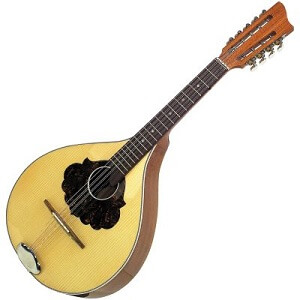Waldzither
 The origins of the waldzither probably date back to Arab incursions into Europe during the early Medieval period. Then the flat-backed, 3-string instruments like the 'seh-tar' (meaning 3 strings) must have been both adopted and adapted by western culture, especially as they were easier to construct than the more complex round backs of the lute. By the time of the Renaissance it had more strings, got a larger body, and was called variously 'cittern' 'sister' or 'cither'. The cittern is one of the few metal-strung instruments known from the Renaissance period.
The origins of the waldzither probably date back to Arab incursions into Europe during the early Medieval period. Then the flat-backed, 3-string instruments like the 'seh-tar' (meaning 3 strings) must have been both adopted and adapted by western culture, especially as they were easier to construct than the more complex round backs of the lute. By the time of the Renaissance it had more strings, got a larger body, and was called variously 'cittern' 'sister' or 'cither'. The cittern is one of the few metal-strung instruments known from the Renaissance period.
It generally has four courses of strings (either singles, pairs or threes), one or more course being usually tuned in octaves, though instruments with more or fewer courses were made. The cittern may have a range of only an octave between its lowest and highest strings, but some also employ "re-entrant" tuning. (The string that is physically uppermost is not the lowest, as with the five-string banjo for example). The tuning and narrow range allow the player a number of simple chord shapes useful for both simple song accompaniment and dances.
Durng the Renaissance the cittern was a popular instrument across Europe. From the 16th until the 18th century it was a common English barber shop instrument, kept in waiting areas for customers to entertain themselves and others with, and popular sheet music for the instrument was published to that end. One development was the english guitar, with a typically pear-shaped body, a flat base, and a shorter than usual neck. It also often had a carved head. Such guitars made by John Preston have the characteristic 'Preston' or watch-key tuners. It had ten strings, tuned C E GG cc ee gg. A close parallel can be easily seen here with the tuning of the waldzither. Many Englich guitar-citterns are still found in Scandinavia.